Walking a loop trail through Honeymoon Bay Ecological Reserve
Trip Report by Nina Shoroplova
If you were just driving by and didn’t know it was there, you might never notice the Honeymoon Bay Ecological Reserve. But if you had heard about it, or been before, or spotted it on the map as you drove northwest from Honeymoon Bay near Cowichan Bay on Vancouver Island to, say, Nitinat, you would know you had found it and would look a little closer. I went there with my son, Alun, on the Victoria Day long weekend in May. The walk through the reserve is a half-mile, 1,000 step loop.
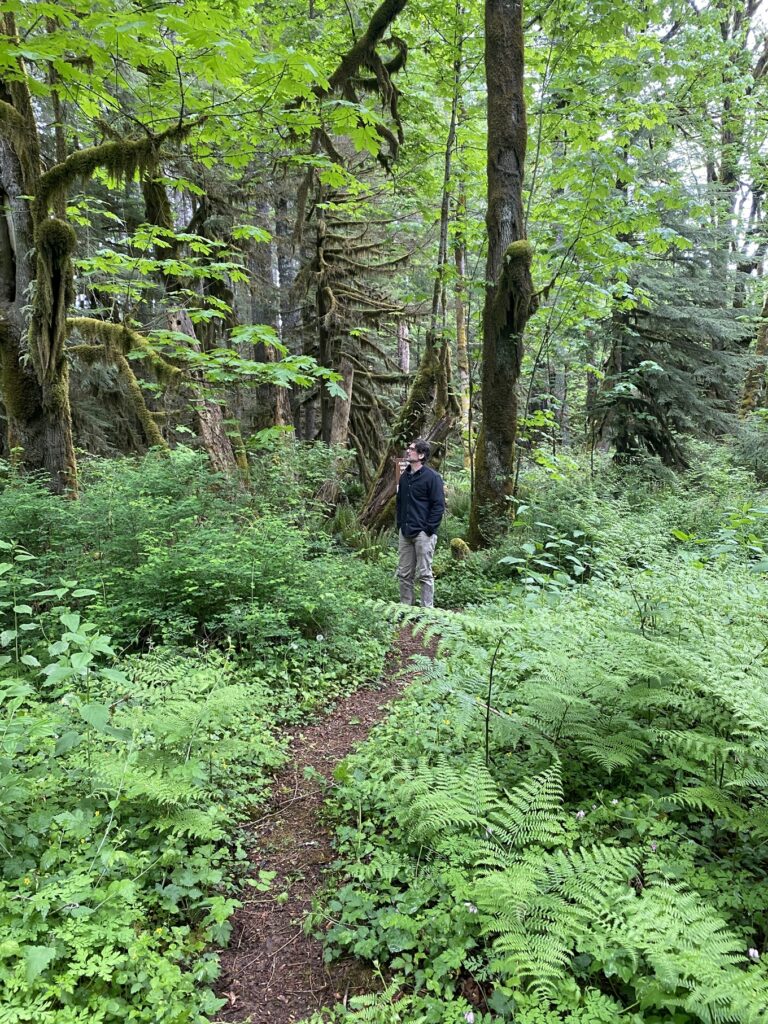
One way of knowing you have reached an ecological area is by all the signs. For instance, the Ministry of Lands, Parks, and Housing put up this sign: Ecological Reserve, “Please help protect this area. It is part of a world system of ‘natural areas’ set aside for research and educational purposes. Camping, fishing, hunting or any destruction of this area is prohibited.”
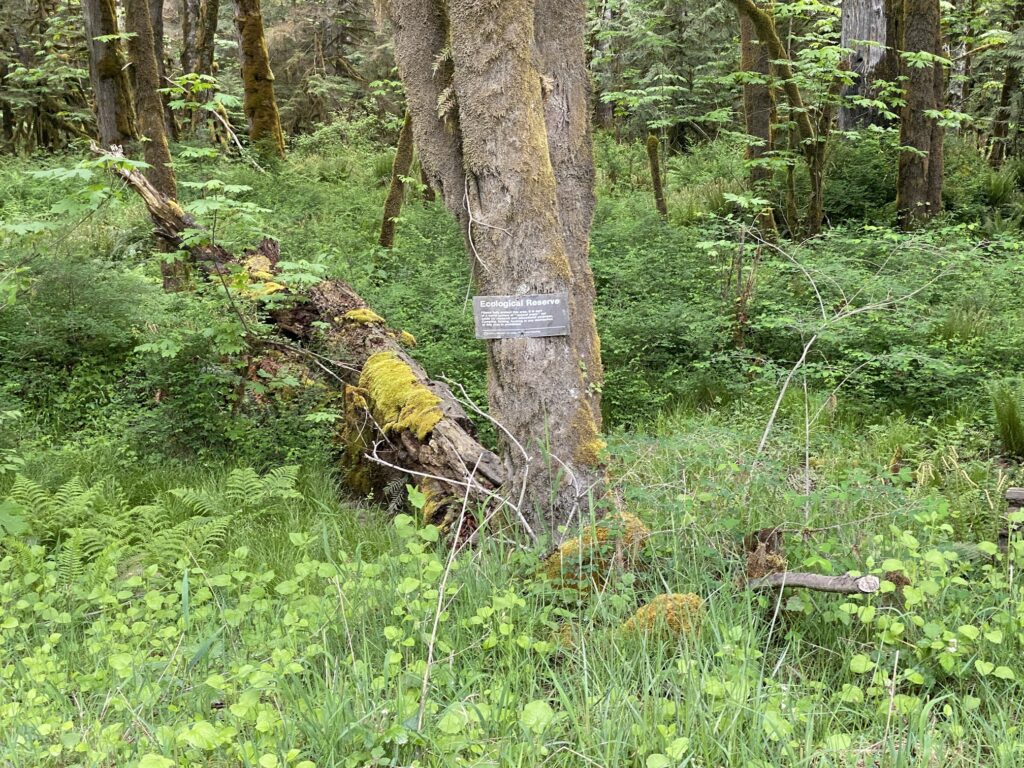
In another location are two more posts, one saying, Alec Walker Memorial Loop Trail, and the other by BC Parks naming the area: Honeymoon Bay Ecological Reserve.

Cowichan Lake Community Economic Adjustment Committee prepared a beautifully painted sign entitled, “Plants to be found in this reserve.” We saw some of them, but not the pink fawn lilies, Erythronium revolutum, the lily for whom the reserve was created to protect. Perhaps we came too late to see the blooms.
I have listed all the native plants from the sign and grouped them in their plant families.
- Aristolochiaceae, birthwort family
- Asarum caudatum, wild ginger
- Asteraceae, sunflower family
- Petasites frigidus, coltsfoot
- Berberidaceae, barberry family
- Achlys triphylla, vanilla leaf
- Brassicaceae, mustard family
- Cardamine hirsuta, pepper cress or hairy bittercress
- Cardamine nuttallii, slender toothwort or beautiful bitter-cress, Nuttall’s toothwort, palmate toothwort
- Fumariaceae, fumitory family
- Dicentra formosa, bleeding heart
- Geraniaceae, geranium family
- Geranium robertianum, herb robert
- Liliaceae, lily family,
- Erythronium revolutum, pink fawn lily
- Maianthemum dilatatum, false lily-of-the-valley
- Maianthemum racemosum, false solomon’s seal
- Maianthemum stellatum, star flowered solomon’s seal
- Prosartes hookeri, hooker’s fairybells
- Streptopus amplexifolius, twisted stalk
- Trillium ovatum, western trillium
- Veratrum viride, green false hellebore
- Onagraceae, evening-primrose family
- Circaea alpina, enchanters nightshade
- Portulacaceae, purslane family
- Clatyonia lanceolata, western spring beauty
- Primulaceae, primula family
- Trientalis latifolia, starflower
- Ranunculaceae, buttercup family
- Actaea rubra, baneberry
- Aquilegia formosa, columbine
- Ranunculus occidentalis, buttercup
- Thalictrum occidentale, western meadow rue
- Violaceae, violet family
- Viola glabella, smooth yellow wood’s violet
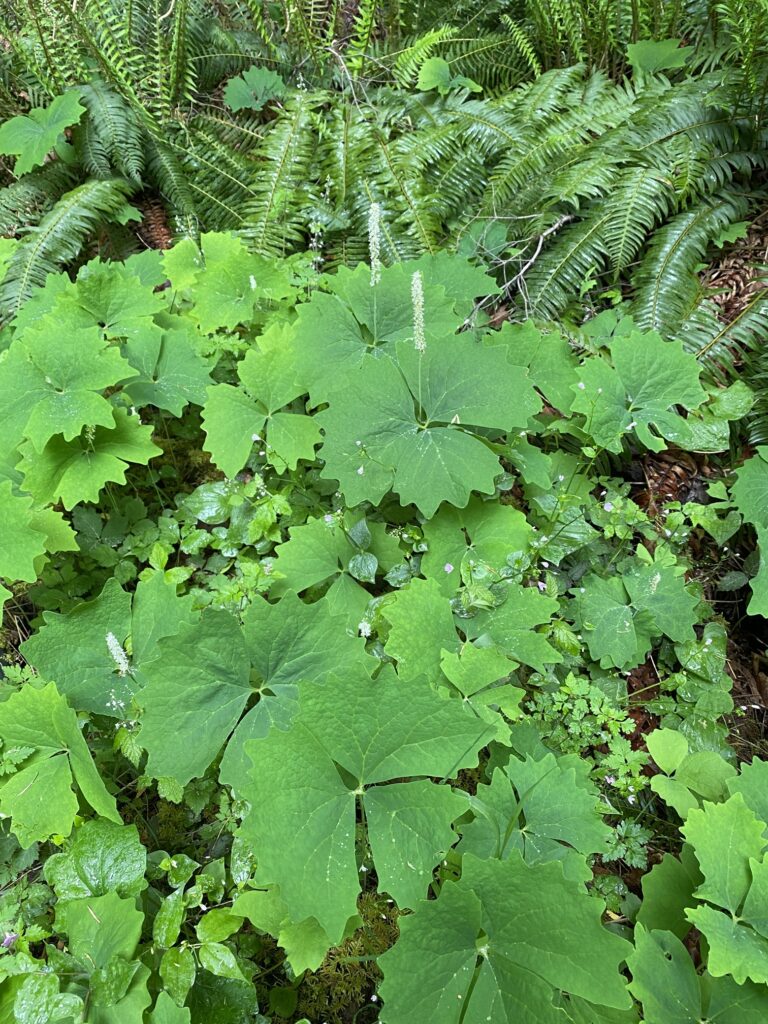
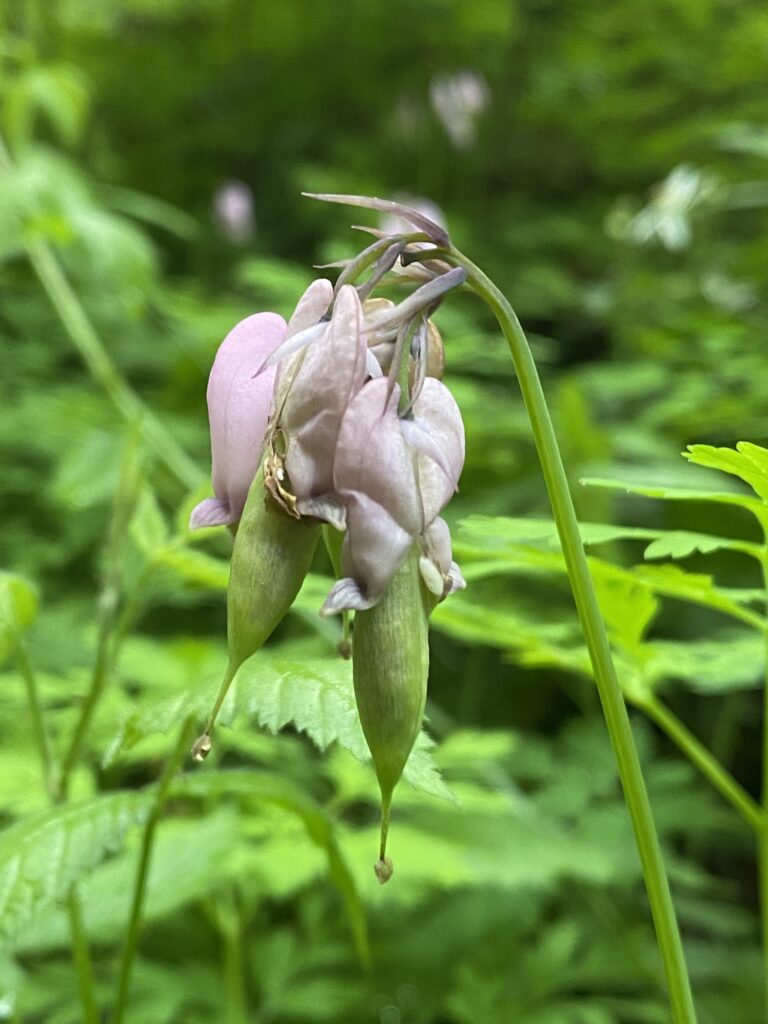
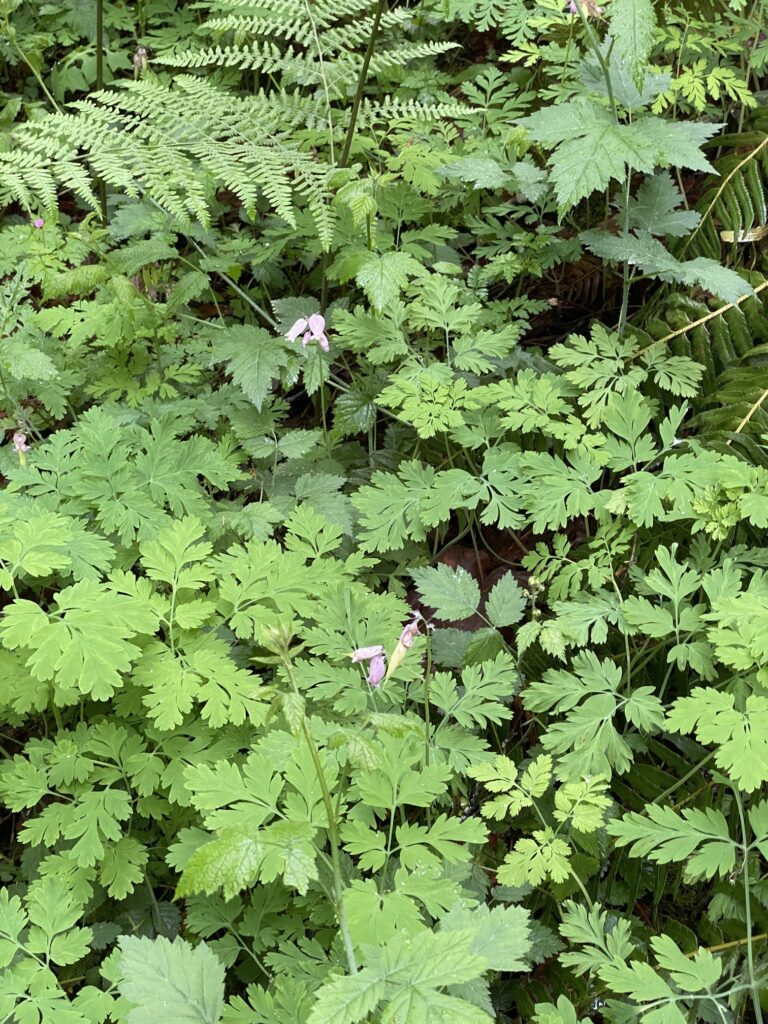
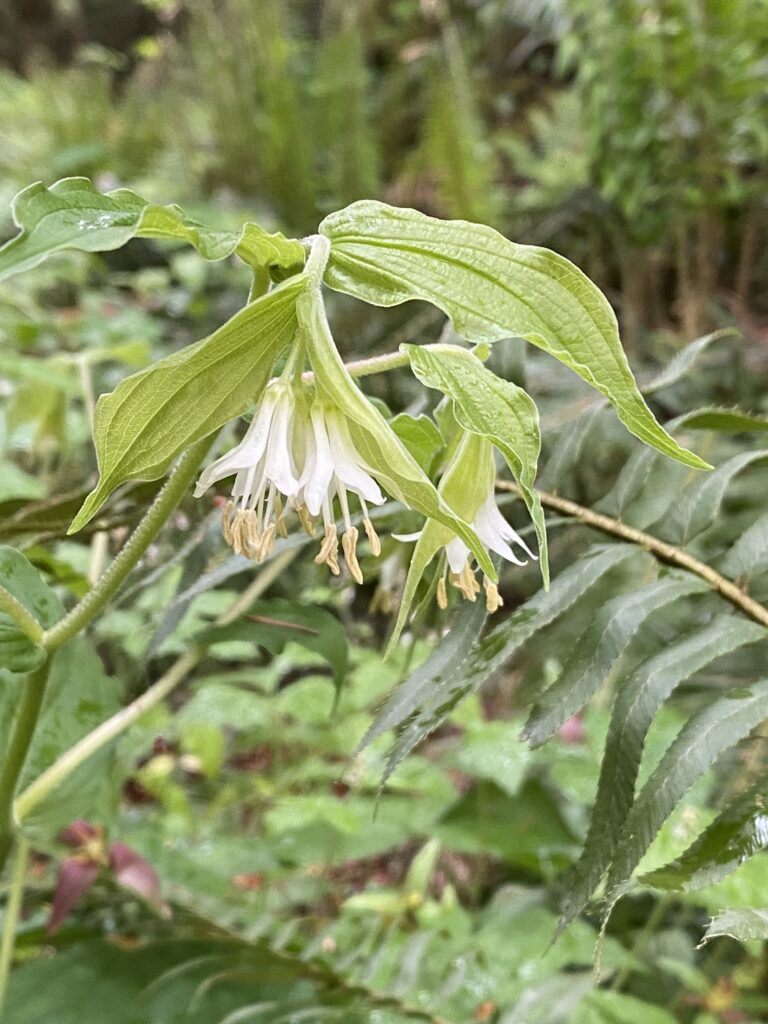
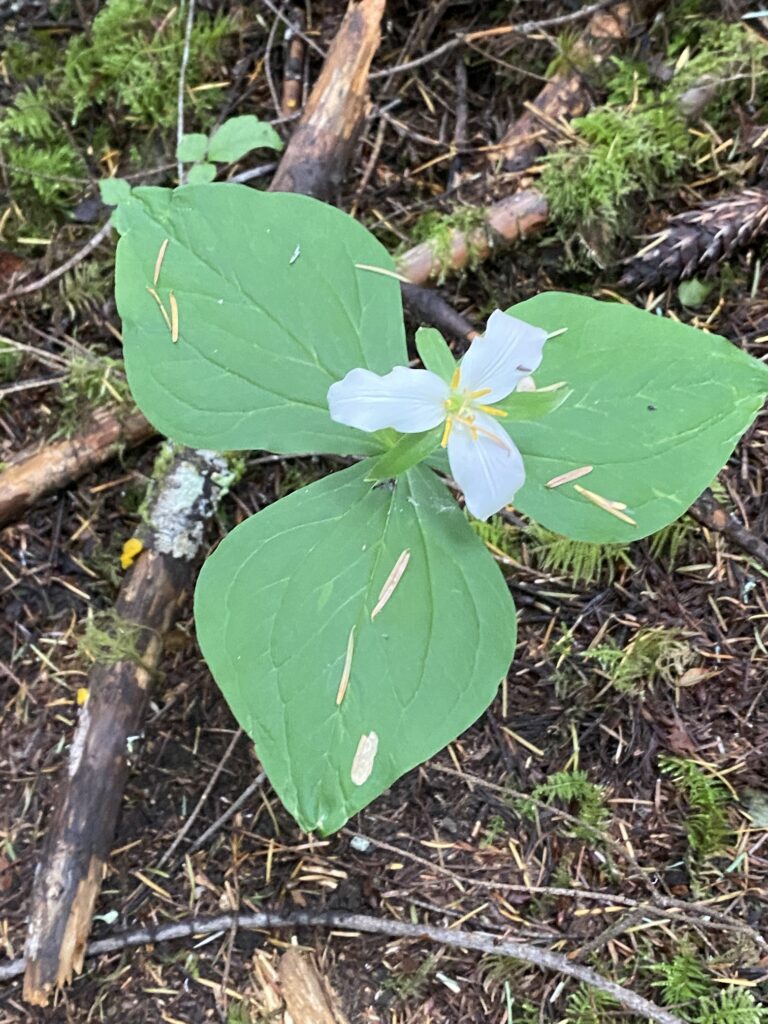
Other plants I admired were
- the Pseudotsuga menziesii, Douglas-fir, its branches disguised with Alectoria sarmentosa, witch’s hair
- the ferns, such as this Gymnocarpium dryopteris, common oak fern,
- various wood-decaying fungi, and
- the overall moss-covered forest.
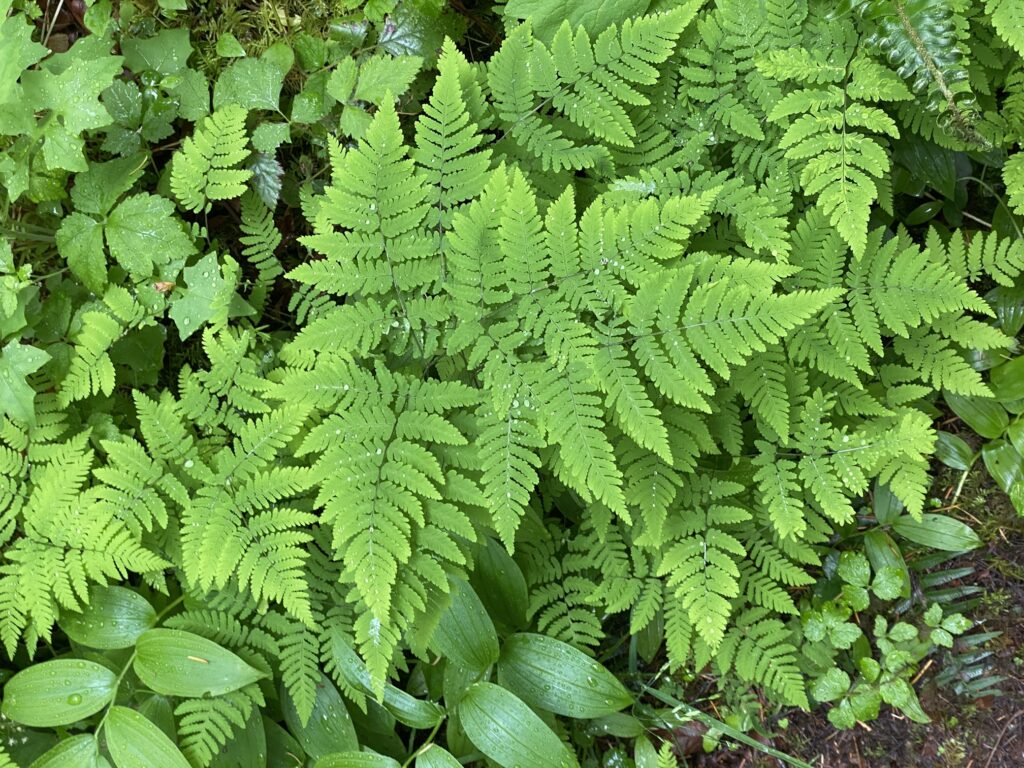
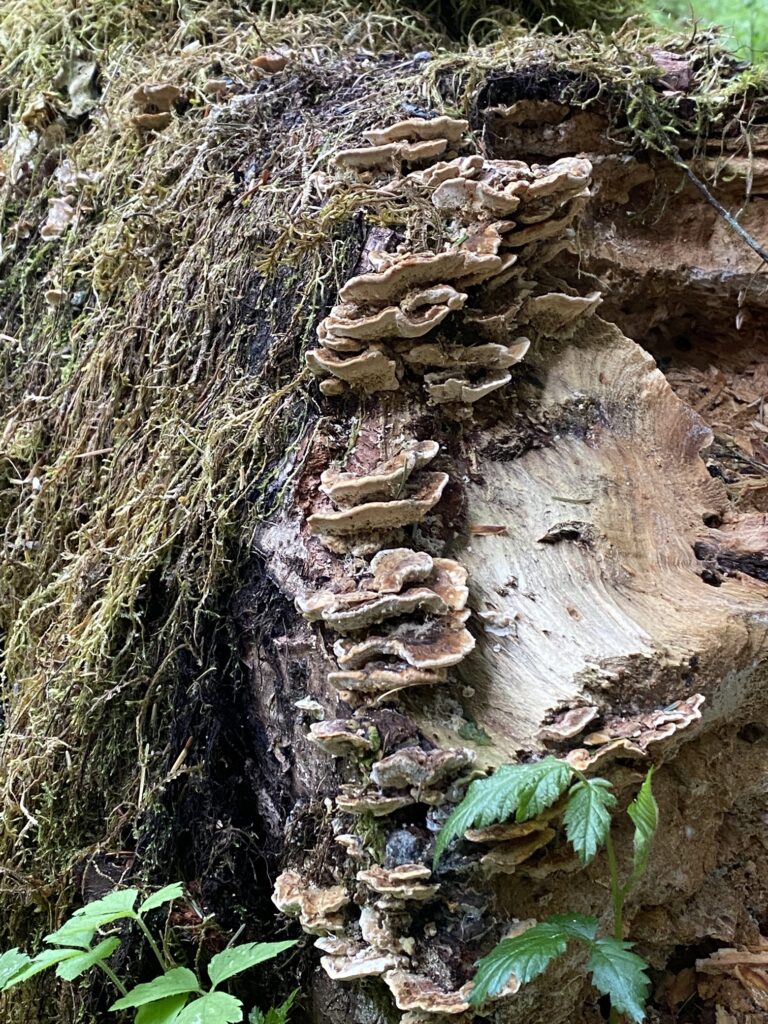
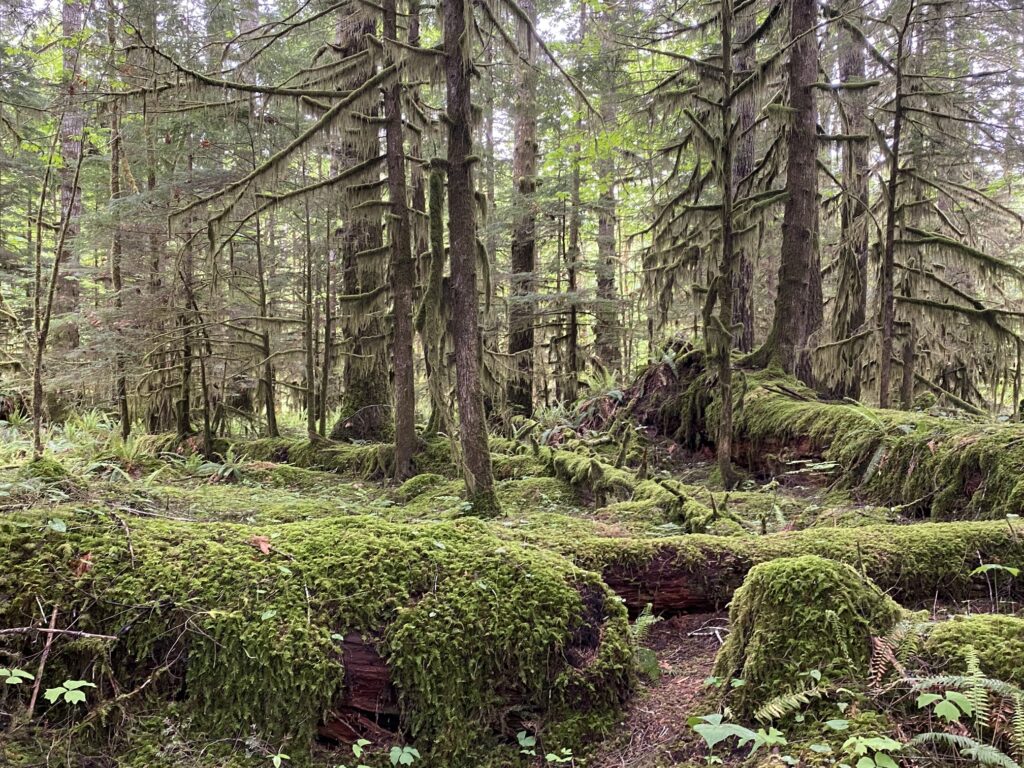
When we first arrived, the reserve was silent. But as the birds became used to us, it became livelier: Pacific wren, Townsend’s warbler, and American robin. If you get a chance to walk this reserve, take it. It’s wonderful.